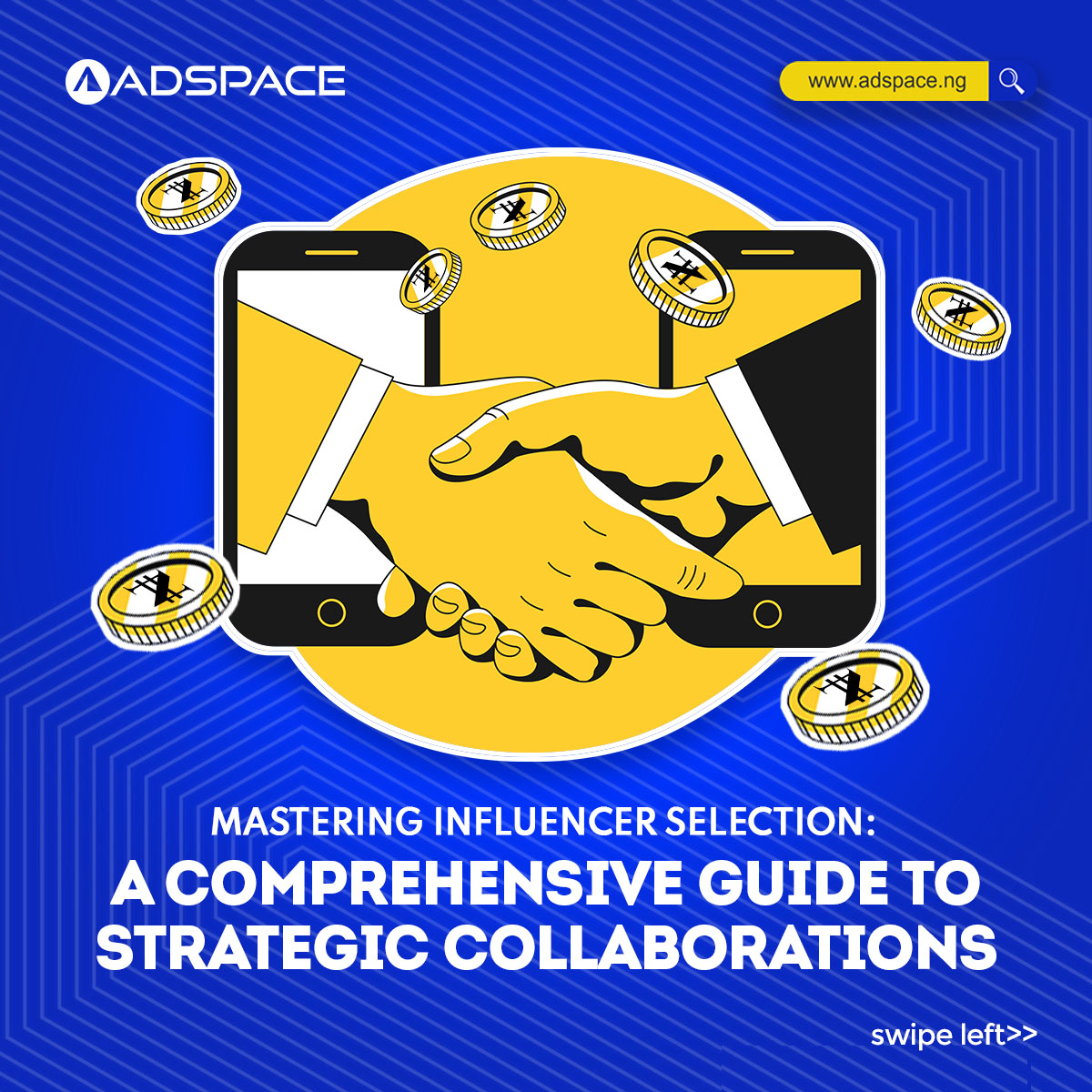I. Introduction: The Art and Science of Influencer Selection
In the ever-evolving landscape of digital marketing, influencers have become pivotal in shaping brand narratives. This guide unravels the intricacies of influencer selection, emphasizing the strategic dance required to align your brand with the perfect influencer for maximum impact.
II. Defining Your Brand Identity: A Prerequisite for Influencer Collaboration

Clarity is Key:
Before delving into influencer selection, establishing a clear brand identity is paramount. Explore how a well-defined identity serves as the guiding force, ensuring your influencer collaborations resonate authentically with your brand.
Objective Alignment:
Effective influencer partnerships should align with specific marketing objectives. This section guides you through the process of defining clear objectives, allowing you to pinpoint influencers whose expertise matches your brand’s goals.
Target Audience Synergy:
Beyond follower counts, aligning with influencers whose audience mirrors your target demographic is crucial. Discover the significance of understanding an influencer’s follower demographics for ensuring a harmonious brand resonance.
III. Navigating Influencer Landscapes: Types, Niches, and Engagement Dynamics

Macro vs. Micro-Influencers:
Dive into the nuances of influencer categories, from macro-influencers with expansive reach to micro-influencers with engaged communities. Learn how to strategically choose influencers based on your brand’s goals and budget.
Niche Relevance Matters:
Explore the impact of niche relevance on influencer collaborations. Uncover strategies for identifying influencers within your niche and understand how niche alignment enhances audience trust.
Decoding Engagement Rates:
Move beyond follower counts and delve into the world of engagement rates. Understand how an influencer’s connection with their audience can be a more accurate measure of impact.
IV. Vetting Influencers: Due Diligence for Successful Collaborations

Authenticity Check:
Authenticity is the bedrock of successful influencer marketing. Learn how to conduct authenticity checks to ensure an influencer’s content aligns genuinely with their audience.
Content Quality Assessment:
Quality content is non-negotiable. Explore methods for assessing an influencer’s content quality, from visual appeal to storytelling and brand alignment.
Track Record Evaluation:
Past collaborations speak volumes. Discover how to evaluate an influencer’s track record through case studies, testimonials, and performance metrics.
V. Negotiating Partnerships: Strategies for Win-Win Collaborations
Transparent Communication:
Clear communication is paramount. This section explores the importance of transparent communication in negotiations, from discussing deliverables to setting expectations.
Compensation Strategies:
Influencer compensation varies. Learn about different compensation models and how to choose the right strategy based on your brand’s objectives and budget.
Contractual Clarity:
Formalize partnerships with well-drafted contracts. Understand the essential elements to include, from deliverables and timelines to exclusivity clauses.
VI. Real-World Examples: Stories of Successful Influencer Collaborations
Authenticity in Action:
Explore a case study showcasing a brand that successfully aligned with an influencer known for their authenticity. Understand how this partnership contributed to increased brand trust and engagement.
Niche Relevance Triumphs:
Dive into a case study highlighting a brand that strategically chose an influencer deeply embedded in their niche. Uncover the impact of niche relevance on audience connection and product adoption.
Micro-Influencers Making Waves:
Discover the success story of a brand that opted for a micro-influencer strategy. Understand how this approach led to heightened engagement and a more targeted reach.
VII. Measuring Success: Metrics and Analytics for Impact Assessment
Defining Key Performance Indicators (KPIs):
Before and after collaborations, defining KPIs is crucial. Understand which metrics matter most to gauge the success of an influencer partnership.
Utilizing Analytics Tools:
Leverage analytics tools for measuring the impact of influencer collaborations. Explore popular tools and learn how to interpret data to assess the effectiveness of your efforts.
Iterative Strategy Development:
Successful influencer marketing involves an iterative approach. Use performance data to refine your influencer selection strategy for continuous improvement.
VIII. Influencer Ethics: Responsible Navigation of Collaborations
Authenticity vs. Endorsements:
Balancing authenticity with endorsements can be challenging. Explore the delicate equilibrium between maintaining authenticity and commercial collaborations.
Disclosure and Transparency:
Transparent disclosure is fundamental in influencer marketing. Understand the importance of influencers disclosing brand partnerships and navigate disclosure regulations.
Addressing Influencer Controversies:
In the era of cancel culture, address potential controversies responsibly. This section provides strategies for protecting your brand’s reputation and making informed decisions about ongoing partnerships.
IX. Conclusion: Elevating Your Influencer Marketing Strategy
As we conclude this in-depth exploration of influencer selection, it’s evident that the art lies in finding influencers whose values, audience, and content align seamlessly with your brand. Navigate the influencer landscape strategically, vet potential collaborators rigorously, and measure success systematically to elevate your influencer marketing game.
X. Key Takeaways: Mastering the Art of Influencer Selection
- A clear understanding of your brand identity is the foundation for effective influencer selection.
- Niche relevance, authenticity, and engagement rates are crucial factors in choosing the right influencers.
- Due diligence, including vetting an influencer’s track record, ensures authentic and successful collaborations.
- Transparent communication, fair compensation, and well-drafted contracts are essential for nurturing influencer partnerships.
- Real-world examples and case studies offer practical insights into successful influencer selection strategies.
FAQ Section: Navigating Common Queries in Influencer Selection
Q1: How do I determine the right influencer type for my brand?
A1: Consider your brand’s goals, budget, and target audience. Macro-influencers offer reach, while micro-influencers provide engaged communities.
Q2: What metrics should I prioritize in assessing an influencer’s suitability?
A2: Focus on engagement rates, audience demographics, and the influencer’s track record. Authenticity and niche relevance are equally important.
Q3: How can I ensure transparent communication in influencer collaborations?
A3: Clearly outline expectations, deliverables, and compensation in a well-drafted contract. Open communication from the beginning fosters trust.
Q4: Are micro-influencers as effective as macro-influencers?
A4: Yes, micro-influencers often offer higher engagement rates and niche relevance, making them impactful for targeted campaigns.
Q5: What role does authenticity play in influencer marketing success?
A5: Authenticity is crucial. Audiences resonate with genuine content, leading to increased trust and brand loyalty.
Q6: How can I measure the success of an influencer collaboration?
A6: Define key performance indicators (KPIs) based on your brand’s objectives. Use analytics tools to track metrics such as brand awareness, website traffic, and sales.
Q7: What steps should I take if an influencer faces controversies?
A7: Address controversies transparently, evaluate the impact on your brand, and make informed decisions about ongoing collaborations.







